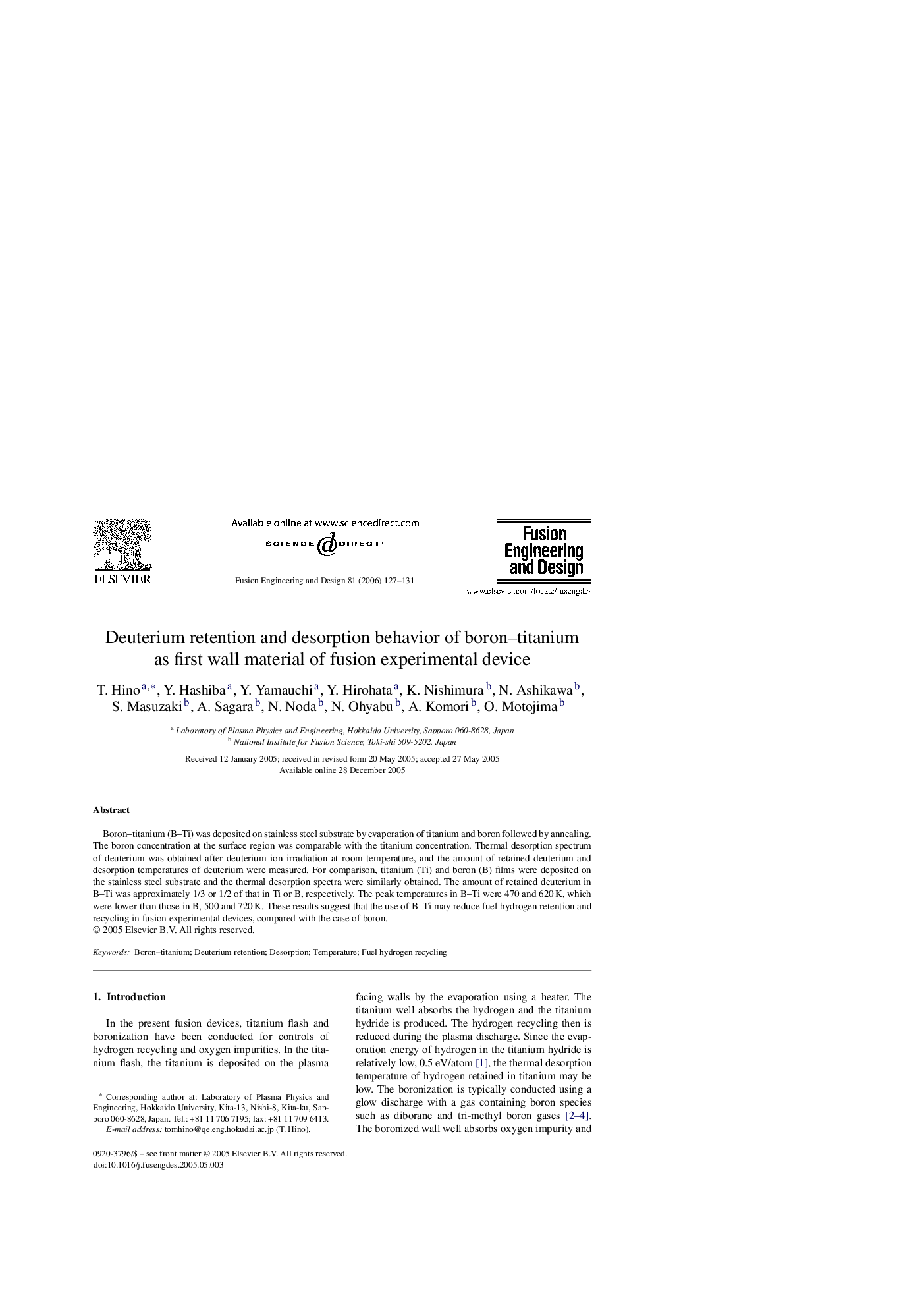| Article ID | Journal | Published Year | Pages | File Type |
|---|---|---|---|---|
| 273437 | Fusion Engineering and Design | 2006 | 5 Pages |
Boron–titanium (B–Ti) was deposited on stainless steel substrate by evaporation of titanium and boron followed by annealing. The boron concentration at the surface region was comparable with the titanium concentration. Thermal desorption spectrum of deuterium was obtained after deuterium ion irradiation at room temperature, and the amount of retained deuterium and desorption temperatures of deuterium were measured. For comparison, titanium (Ti) and boron (B) films were deposited on the stainless steel substrate and the thermal desorption spectra were similarly obtained. The amount of retained deuterium in B–Ti was approximately 1/3 or 1/2 of that in Ti or B, respectively. The peak temperatures in B–Ti were 470 and 620 K, which were lower than those in B, 500 and 720 K. These results suggest that the use of B–Ti may reduce fuel hydrogen retention and recycling in fusion experimental devices, compared with the case of boron.
